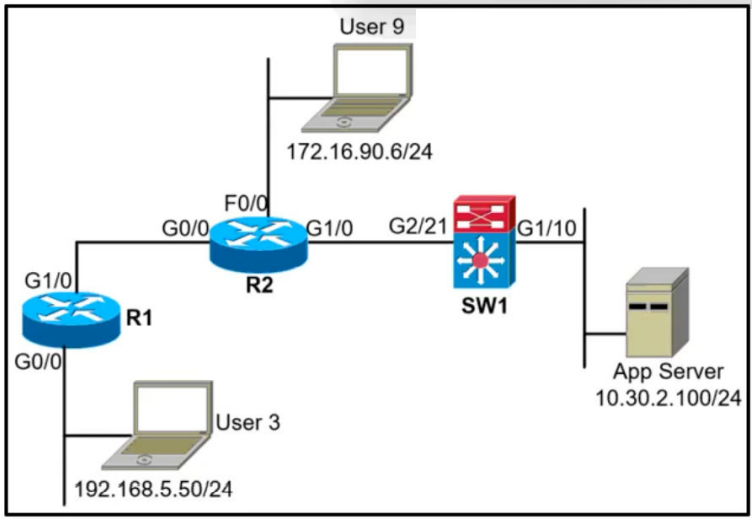Correct Answer: BIn the context of network management, standard access control lists (ACLs) are generally placed as close to the destination as possible. This approach minimizes the impact on network traffic by blocking undesirable traffic only when it is about to reach its final destination, rather than filtering it prematurely and potentially affecting other network flows. Given the requirement to block ping from User 3 to the App Server while still allowing communication between User 3 and other devices (like User 9), the appropriate interface to apply the ACL in the outgoing direction is SW1 interface G1/10, which is the closest point to the destination (App Server). Applying the ACL here ensures that only the traffic to the App Server is filtered, meeting the given criteria effectively.
